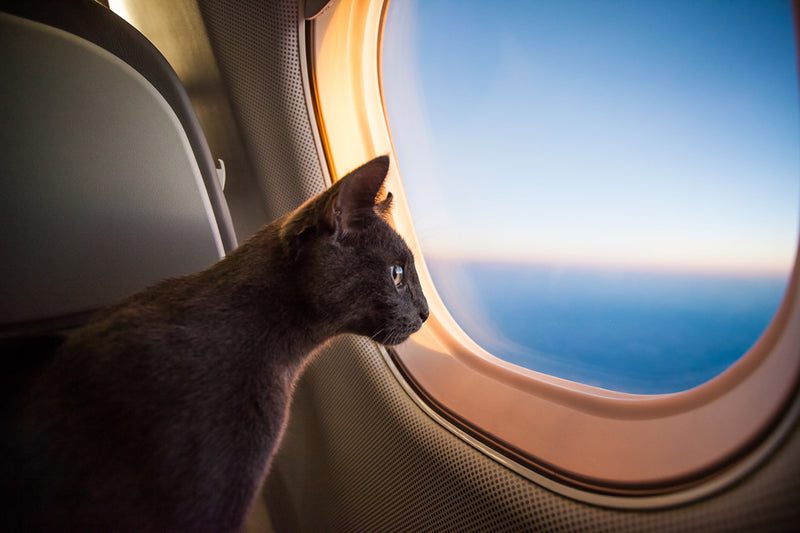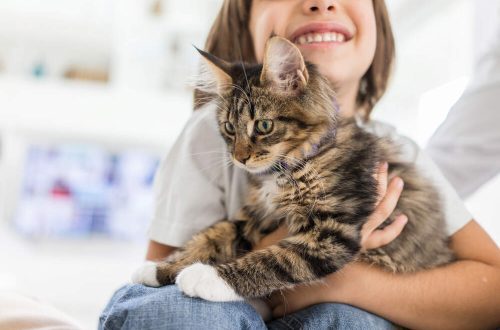
Traveling with a cat
Most cats don’t get excited about traveling – they tend to be very territorial and feel vulnerable when away from home. The prospect of staying with family or exploring new places after a trip is usually unimpressive for cats, just as it is for dogs.
If you want to travel with your cat on a journey by car/train or by air, you need to make sure that the carrier for it is chosen correctly and that your pet feels comfortable and safe in it; you should also keep your pet in a confined space and after traveling for some time, at least until the moment when he gets used to the new territory. Of course, a cat that often and with pleasure travels with its owner and does not panic and does not run away when it finds itself in an unfamiliar place is a rarity, but they do occur.
Travelling by car
It is very dangerous to let a cat out of a carrier in a car – not only because it can lead to an accident if the animal interferes with the driver, but also because when a door or window is opened or in an accident, the cat can jump out of the car and get lost.
You’ll need to buy a durable carrier that’s easy to clean, no matter what happened on the trip – whether the cat went to the toilet or got sick on the trip. Also take into account the weather conditions where you are going – from the temperature in the car to the temperature at the final destination of your trip. If you expect it to be very hot, use a basket that is well ventilated. If it is cold, then such a warm carrier, in which there will be no draft, but fresh air still enters. Position the carrier so that it is securely fastened in case you have to brake hard and is well ventilated – ie. not under a pile of suitcases. Do not put it in the trunk, as well as under the rear window in a hatchback – there may be poor ventilation and the cat may overheat. You can secure the carrier behind one of the front seats, or use the seat belts and secure it to one of the seats.
Why all this noise?
The cat may meow before or during the entire trip – talk to her calmly and cheer her up, but do not let her out of the carrier. This noise can drive you crazy, but remember: it is unlikely that the cat is suffering much. She’s just expressing her displeasure with the situation! In the end, the constant movement and noise of the car will pull her to sleep, or at least she will calm down. Check in regularly to see how your pet is feeling, especially if the weather is hot – don’t underestimate how quickly the air in a car can warm up; keep this in mind if you make a stop and leave the cat in the car. Park the car in the shade and open the windows, and if it is very hot outside, have a snack nearby, and the carrier can be left in the car with all the doors open, or placed outside, making sure that it is securely locked so that the cat cannot get out of it. Heatstroke can be life threatening.
Traveling by train
Obviously, if you’re traveling by train, you’ll want a very strong and secure carrier that your cat can’t get out of, but at the same time light enough for you to carry. You may want to purchase a carrier with a hard bottom in case the cat wants to go to the toilet, so that it does not stain the entire passenger car. Line the bottom of the carrier with absorbent paper and a rag, as well as your pet’s bed. You may be able to keep a cat in its carrier on your lap, depending on the type of train and space available.
Traveling by plane
If you intend to take your cat on a plane trip, you need to plan ahead. You will need to choose an airline, and how they intend to transport your pet will greatly influence your choice. Most airlines do not allow cats to be transported in the aircraft cabin and transport them in a special heated and sealed compartment in the cargo area.
Most cats do not experience any inconvenience when traveling, however, it is not recommended to transport pregnant cats and kittens under the age of three months. Also keep in mind that not all flights are licensed to carry animals, so your pet may be on a different plane.
If possible, it is best to take the cat on a direct flight so that it does not experience the stress of transferring from one aircraft to another and the weather being too hot or too cold in the transfer country. This will also affect the flight time you choose. The International Air Transport Association standards stipulate that the container must be large enough for the animal to easily climb up and turn around – check the requirements of the airlines you have chosen.
For more information on obtaining a passport for your pet, please contact the addresses below.
DEFRA (formerly Department of Agriculture, Fisheries and Food), Division of Animal Health (Disease Control), 1A Page Street, London, SW1P 4PQ. Tel: 020-7904-6204 (Quarantine Department) Website: http://www.defra.gov.uk/wildlife-pets/pets/travel/quarantine/
Arriving at your destination
Upon arrival, place your cat in one of the rooms and make sure it is comfortable, safe and unable to escape. Offer her water and some food, although it is possible that the animal will not want to eat until it is a little accustomed to the new place. Keep your cat out for at least a week and make sure all identification marks are on her in case she gets lost. Don’t feed her for about 12 hours so she gets hungry and comes back to feed when you call her. Gradually allow the animal to explore new territories and use the food as a guarantee that your pet does not run too far and return home in time to eat again.
Using a carrier
For cats, the arrival of a carrier usually means a trip to the vet, so they are often in no hurry to get inside! Give your cat time to get used to the carrier/basket well before travel.
Make it a pleasure for the cat to be inside – for example, you can give the cat treats when she is in a carrier or make a cozy bed inside from a familiar blanket that can be used on a trip. Leave the door open and encourage your cat to get in and out, and to sleep inside the carrier. Then, when it comes to traveling, the cat will at least be familiar with the conditions in which she will have to spend some time.
If you have several cats, it is better to place them separately, each in its own carrier – then the space inside will be better ventilated, there will be more space, and there will be less chance of overheating. Even best friends can become stressed while traveling together and may start to act uncharacteristically and be aggressive towards each other. By placing cats in different carriers, you will prevent possible damage. In order to feel comfortable, it may be enough for cats to simply see and hear each other.
Do not give your pet food for 4 to 5 hours before travel in case he becomes unwell on the road. Offer your pet water before departure and whenever possible during travel. You can buy special bowls that are attached to the cage, which are difficult for the cat to turn over on the road and which are easy to fill with water, while the door of the cage does not have to be opened and there is no need to stop for this.





